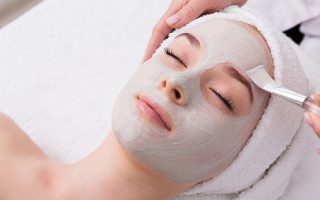Building the perfect beauty routine can be an obstacle course. When we suffer from wrinkles or other skin problems, it can be tempting to pile the products on our skin. And while it’s essential to meet all of our skin’s needs, we have to be careful about which active ingredients we can and cannot mix. Some active ingredients will irritate while others gain or lose effectiveness. Here’s a handy little guide to building a skincare routine like a pro!
What happens when you apply several products?
An effective skincare product is a cosmetic that contains one or more active ingredients. Each of its active ingredients is formulated at a certain pH, with other ingredients to help their penetration into the skin or to increase its effects tenfold. Vitamin E, when used as an antioxidant and active ingredient, for example, needs vitamin C in the formula to have interesting effects.
Each cosmetic formula is complex. Thus, the main risk when we apply different products one after the other is to irritate. Wrong use of ingredients that shouldn’t be mixed can even increase the sensitivity of the skin over the long term. Finally, partly for reasons of pH, mixing two ingredients can even contradict the effect of each other and end up not benefiting our skin.
For example, vitamin C is quite acidic and retinol are quite basic. This is why their usual forms (some vitamin C derivatives are more stable, others less acidic, etc.) are generally not formulated in the same product. This is also why applying a product containing vitamin C and then another based on retinol will reduce the effectiveness of both cosmetics.
Combinations to avoid
Retinol + Vitamin C:
For the reasons mentioned above, we strongly advise against using both the ingredients in the same routine. Consumers should favour vitamin C in the morning for its antioxidant protection, and retinol in the evening.
Retinol + AHA / BHA:
These two active ingredients are very powerful: they both refine the surface layer of the skin. However, the risk of irritation is therefore increased tenfold.
Two exfoliators (with AHA / BHA or a scrub):
When using two exfoliators, you risk over-exfoliating your skin, and that’s the worst thing you could do as it damages the skin barrier.
Combinations to look for
Niacinamide + Bakuchiol or AHA:
Niacinamide or vitamin B3 is an incredible active ingredient. It provides antioxidant protection, brightens the complexion and has soothing properties. Using a niacinamide-based product, therefore, reduces the potential irritation due to AHAs or retinol.
Vitamin B5 + Bakuchiol or AHA or Vitamin C:
Vitamin B5, in addition to being known for its moisturizing and soothing, has been proven as helping to heal the skin. Coupled with bakuchiol, AHAs or vitamin C, it, therefore, helps to reduce potential irritations.
Hyaluronic acid + Bakuchiol or AHA or Vitamin C
Hyaluronic acid is a humectant that retains water from the air and carries it deep into the skin. It improves the effects of most active ingredients including AHAs, bakuchiol or vitamin C.


